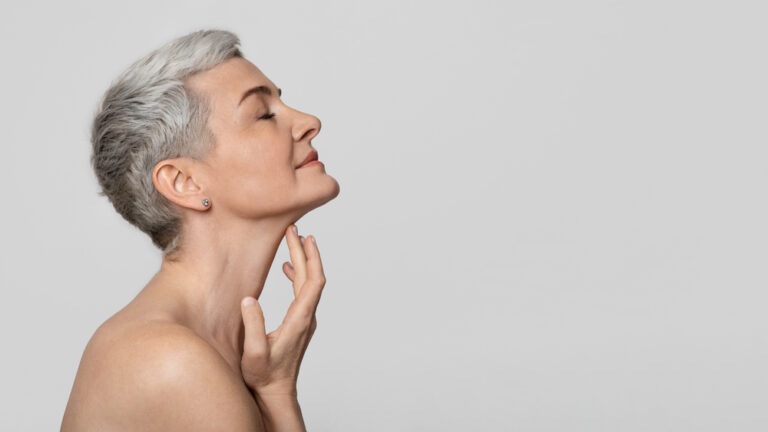
September 09, 2016
When considering your plastic surgery and cosmetic treatments, the options available sometimes are overwhelming. Are surgical procedures, such as a tummy tuck, facelift, breast augmentation or liposuction, right for you? Perhaps the subtle results achieved with innovative nonsurgical treatments, like Profound, UltraShape Power, CO2RE or injectables, are your best choice.
“As a cosmetic plastic surgeon, I help patients navigate this important question every day,” said Julene Samuels, M.D., a plastic surgeon in Louisville, Ky. “Even though I am a surgeon and I love to operate, I realize the limitations of even well-performed plastic surgery. Surgery isn’t always the right choice, and sometimes it’s just too much.”
“Surgery also may not address all of a patient’s concerns in a given area, and may require nonsurgical adjuncts to deliver the optimum result, or to maintain a surgical result over time. Furthermore, since entering private practice in 1994, there are now many more truly meaningful nonsurgical options that are very worthy of consideration than there used to be.”
Here is a list of things to consider as you try to determine if surgery or a nonsurgical option is right for you…
The discussion surrounding any cosmetic concern should involve a discussion of appropriate surgical as well as nonsurgical options with a board-certified and knowledgeable physician who actually offers both surgical and nonsurgical options. Have you ever heard the phrase, “If all you have is a hammer, the whole world is a nail”?
“There is a line that is written in all my patient charts that goes like this: Risks, benefits, options and alternatives, limitations and revisions outlined,” added Dr. Samuels. “A thorough discussion of the surgical options and alternatives to surgery is the only true route to informed patient consent. Every surgical patient who comes to see us hears about the best nonsurgical options for care of their particular concern first, and then we focus on the surgical options next. That way, my staff and I can help patients figure out whether it is surgery they desire or something else.”
Many times, patients may not be aware good nonsurgical options for their concern exist. Conversely, understanding the limitations of a nonsurgical procedure might mean a change of course to a surgical approach instead.
Per Dr. Samuels: “All patients deserve to hear both nonsurgical and surgical options, the intended results of each, what the anticipated process of each will involve, and then the right choice between surgery or non-surgery can be made.”
There are also many instances where a patient may combine nonsurgical and surgical approaches. Staging results or improving one’s candidacy for surgery may make starting out with a nonsurgical approach the best option, delaying surgery.
It is also common for many patients to choose a more thorough correction via surgery initially, then utilize nonsurgical procedures to maintain surgical results without the need for further surgery or surgical revision.
According to Dr. Samuels, there is definitely a place for nonsurgical treatments in the armamentarium of ways to proactively thwart the aging process. It is often possible now to utilize meaningful nonsurgical treatments at earlier ages to slow the aging process, and to delay the age at which patients present for more aggressive management.
“As a plastic surgeon, I am often asked, ‘Have you had any surgery yet?’ My answer: No, but I will when I run out of good nonsurgical options that make me happy!
“Don’t get me wrong. Sometimes surgery really is the only option. But the real key to cosmetic surgery success is to choose age-appropriate interventions (surgical or nonsurgical), to operate only when necessary.
“And when there is no good or equivalent nonsurgical alternative, [the key is] to choose the right surgical techniques when you do choose surgery; to try to avoid too many surgeries over one’s lifetime; and to use nonsurgical alternatives where appropriate in a proactive manner, or for nonsurgical maintenance.
“In the end, it’s good to have options.”
To learn more about innovative surgical and nonsurgical options contact Dr. Samuels at 502-897-9411.